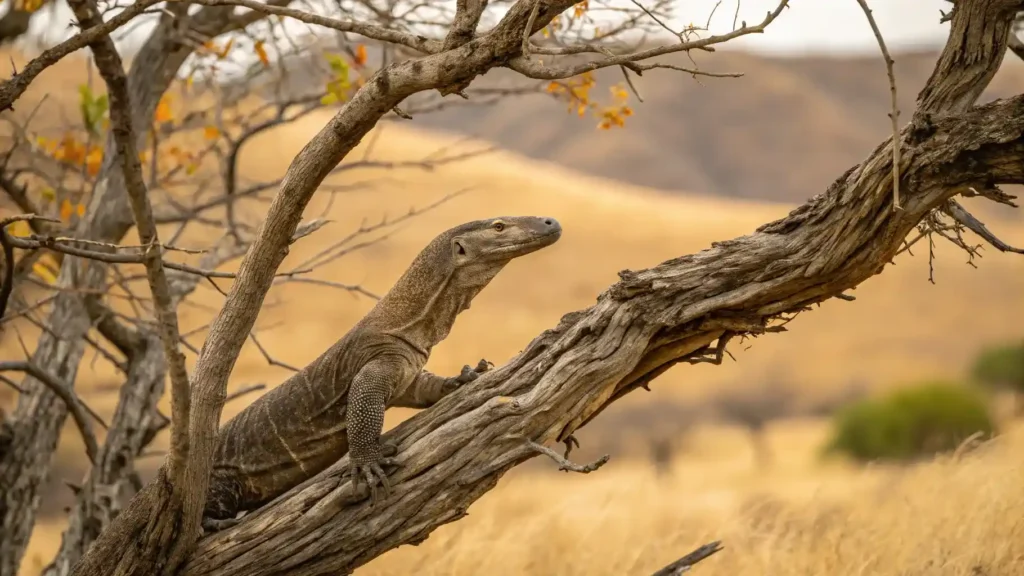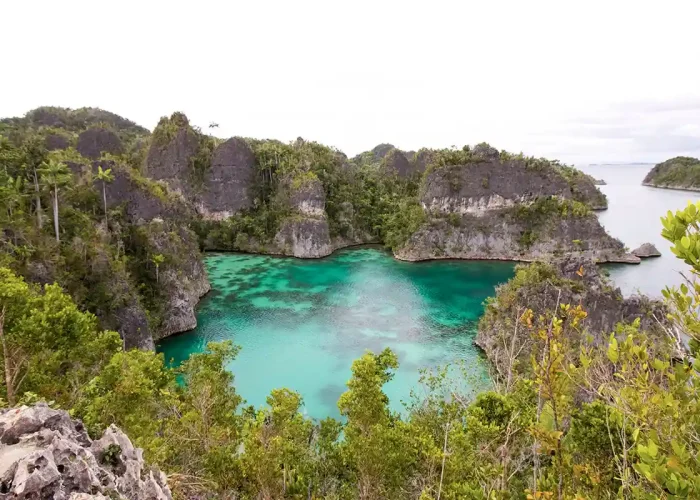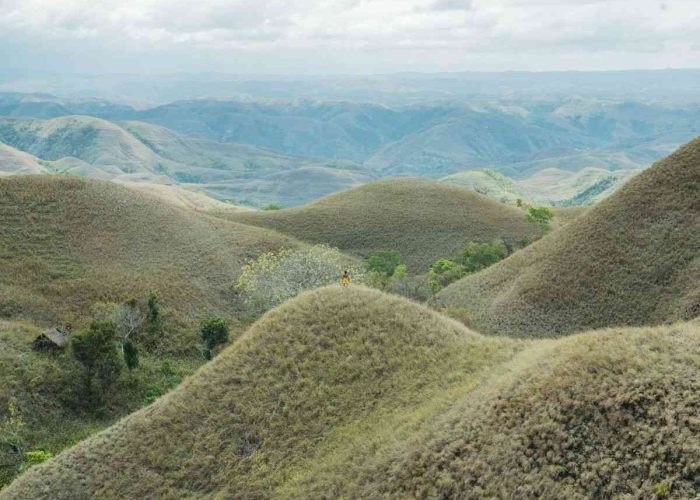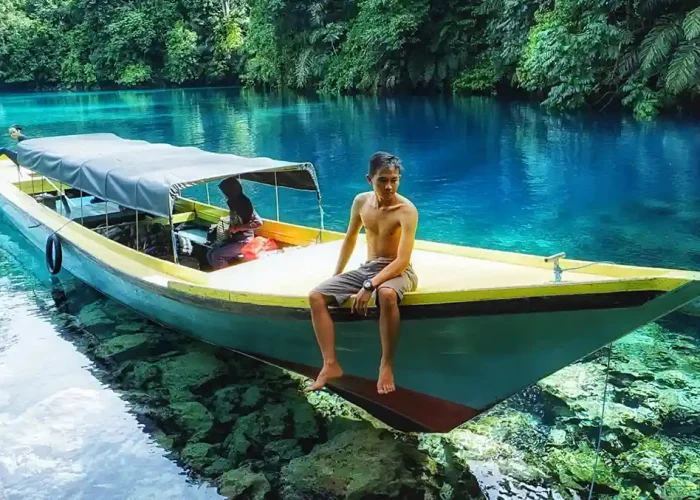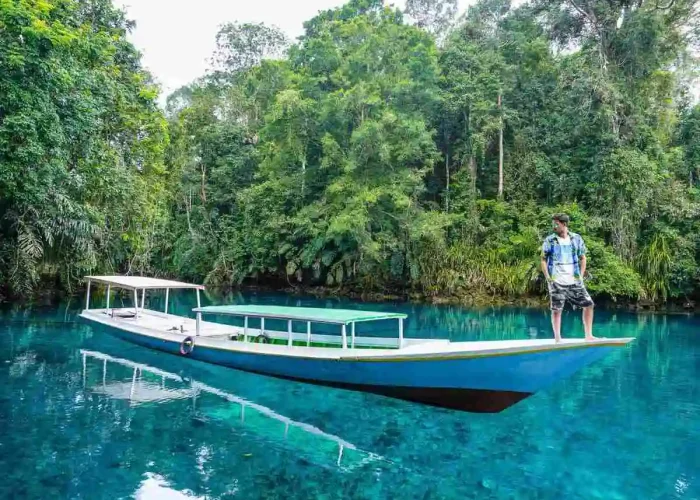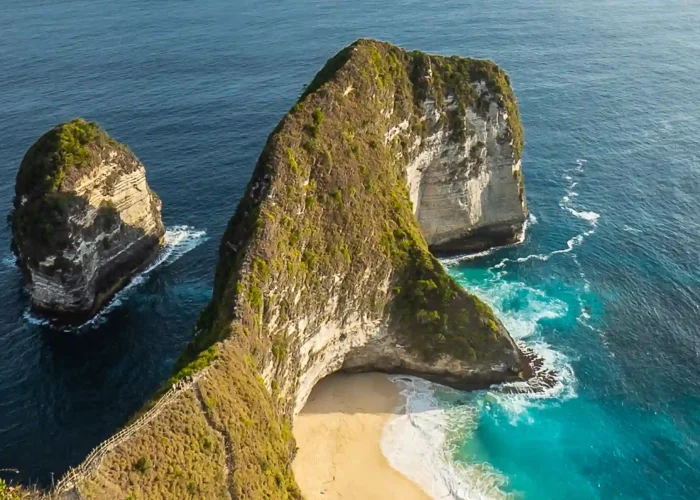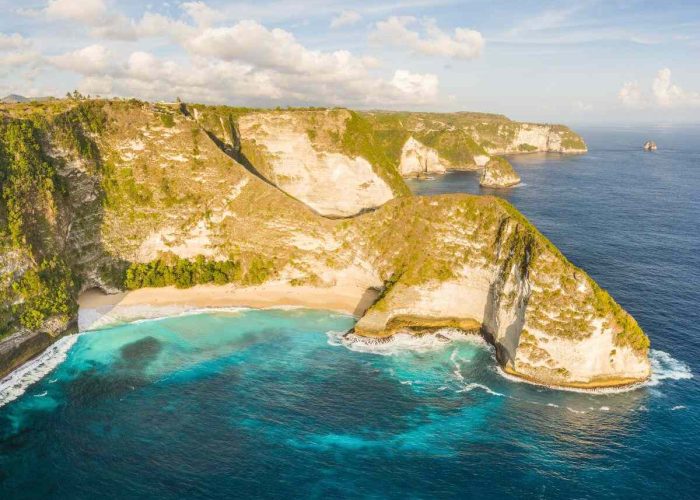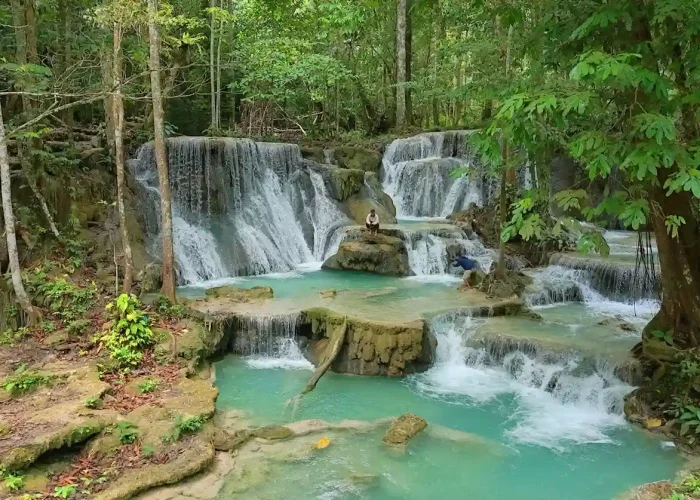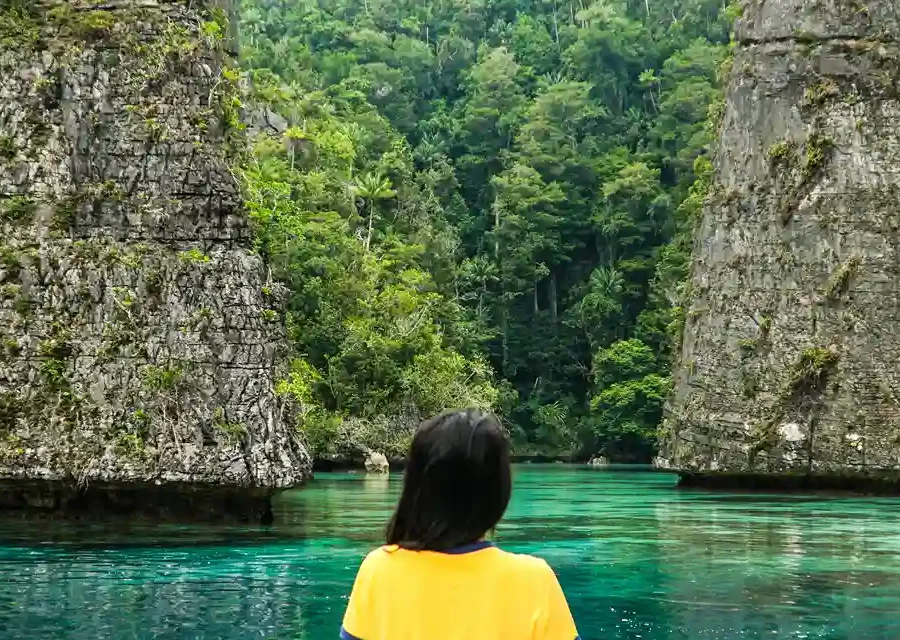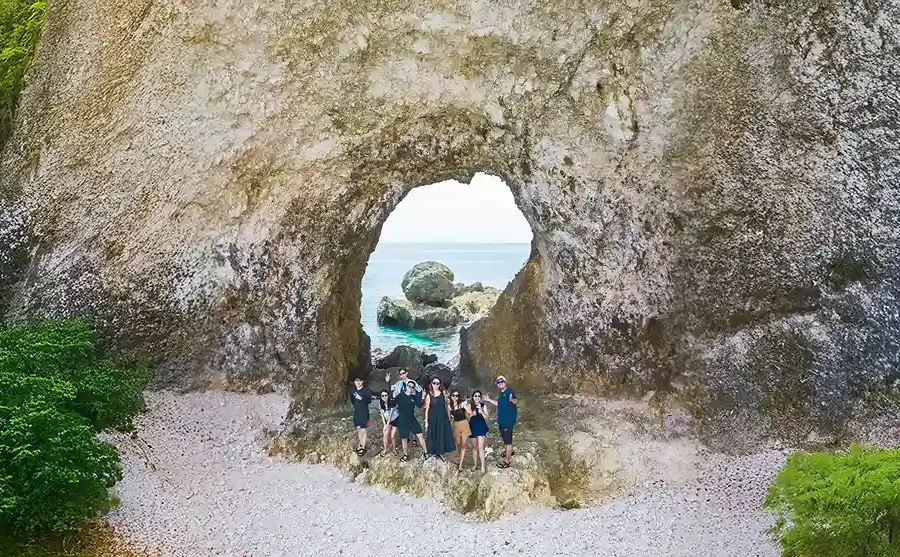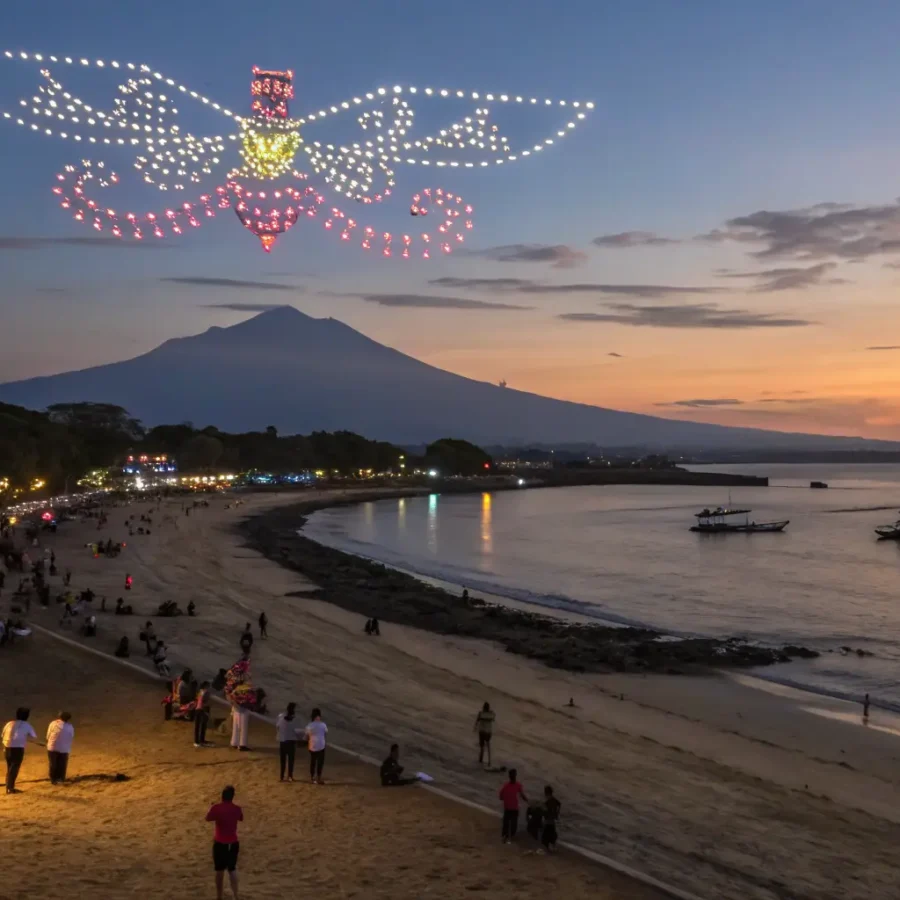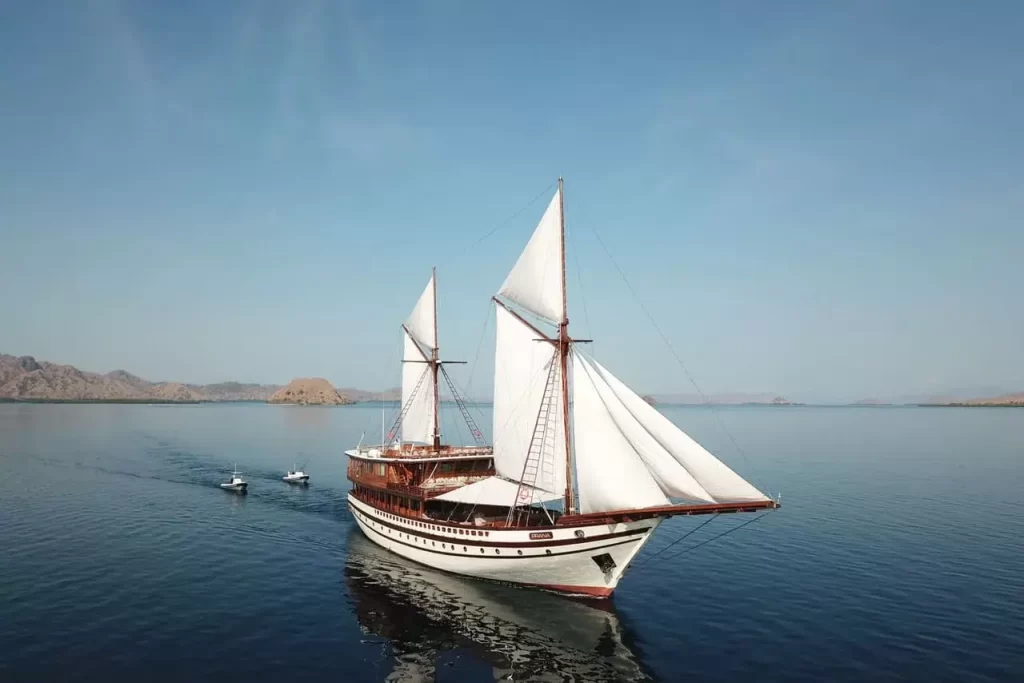Komodo dragons are one of the few ancient creatures that have survived until today. With their massive bodies, razor-sharp teeth and incredible hunting skills, these reptiles never fail to capture the attention of travelers visiting Komodo Island. It’s no wonder many people are curious about their unique habits. One of the most common questions is: can Komodo dragons climb trees?
This question is indeed fascinating. When you imagine the large and heavy body of a Komodo dragon, climbing seems almost impossible. But surprisingly, there are interesting facts about this prehistoric reptile’s behavior that you may not know yet. In this article, we’ll dive deeper into their climbing abilities, the reasons behind it and how you can witness this unique behavior in their natural habitat.
Table of Contents
Understanding the Physiology of Komodo Dragons
Before we go further, you need to understand a bit about the physiology of Komodo dragons (Varanus komodoensis). They are the largest lizard species in the world, growing up to 2–3 meters in length and weighing more than 70 kg. These fascinating species are native to a few Indonesian islands, including Komodo, Rinca, Flores, and Gili Motang. Their massive size is the main reason many people assume they can’t possibly climb trees.
Besides their size, Komodo dragons are equipped with sharp claws and strong legs. These claws help them dig the ground, tear apart prey, and also assist young Komodos in climbing smaller trees. However, as they grow larger, their muscle strength is more focused on walking and hunting on land rather than climbing.
Another striking feature is their long and powerful tail, which functions as a balance during movement and as a weapon when threatened. While useful for hunting, the tail doesn’t contribute much to climbing. So, from a physical perspective, only young Komodo dragons are capable of climbing trees, while adults are mostly ground-dwellers.
Can Komodo Dragons Climb Trees?
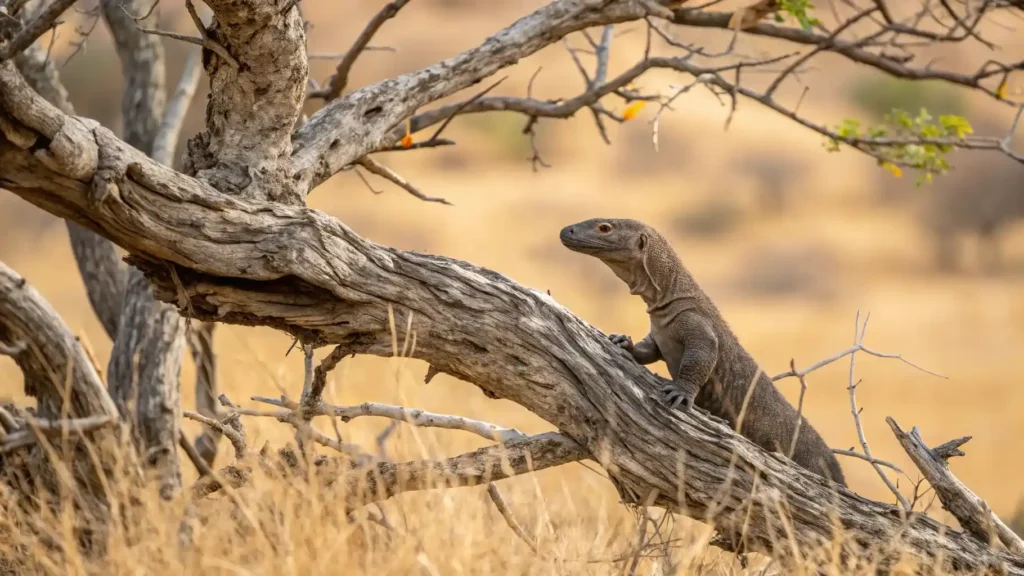
Yes, Komodo dragons can climb trees, but this ability is limited to the younger ones. When newly hatched, Komodo dragons are small and lightweight. At this stage, they have the ability to climb both low and tall trees, which plays an essential role in their survival. Young Komodo dragons have excellent tree-climbing abilities, allowing them to navigate their environment with agility and precision.
Why is this important? Because juvenile Komodo dragons are often targeted by adult Komodos. Komodo dragons are known for being cannibalistic, which means the young must find a way to protect themselves. Climbing trees allows them to escape potential attacks and significantly increases their chances of survival.
On the other hand, adult Komodo dragons are almost incapable of climbing. Their body weight is simply too heavy, and the trees in their native habitat cannot support such massive creatures. So, even though they retain sharp claws, climbing trees is no longer a skill they rely on once they reach adulthood.
How Do Komodo Dragons Climb Trees?
If you’re wondering how juvenile Komodo dragons manage to climb, the answer is quite fascinating. Young Komodos use a combination of their sharp claws and light bodies to crawl up tree trunks. They usually select smaller trees with sturdy branches strong enough to hold their weight.
While climbing, young Komodos move slowly yet steadily. Their claws grip tightly into the bark, while their long tails help them balance to prevent falling. This technique works effectively for their size and agility.
However, once they grow larger, this method no longer works. The added weight makes it nearly impossible for adults to hold themselves on tree trunks. This is why climbing remains an important survival skill only in their juvenile phase, before they fully adapt to life as apex predators on land.
Read more: How Komodo Dragons Reproduce? Explore Their Unique Process Here!
Why Do Komodo Dragons Climb Trees?
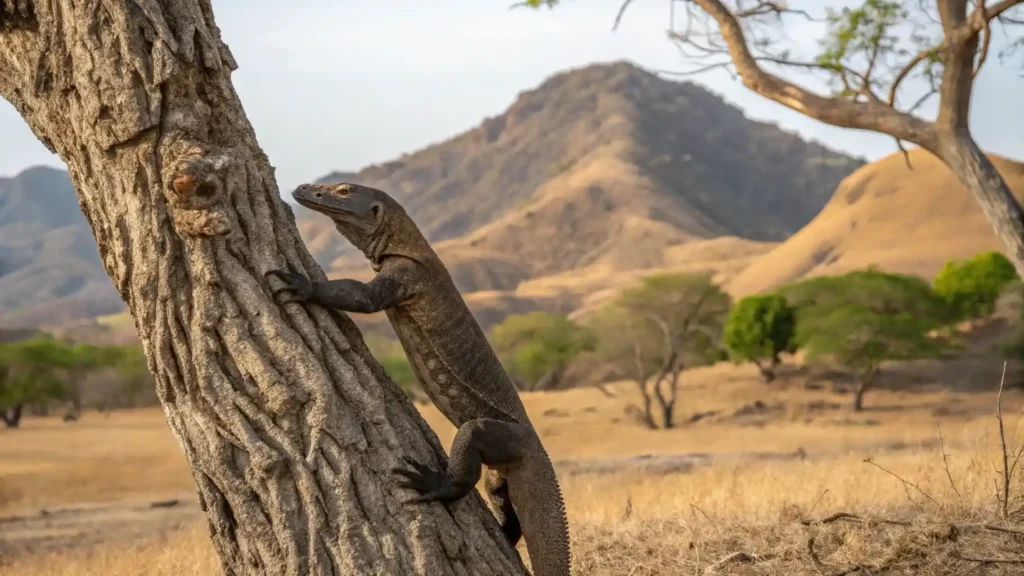
If you’re still curious why young Komodos climb trees, the answer is logical and linked to survival. There are several key reasons behind this behavior, and each one is closely related to their unique adaptations and survival strategy in the wild.
- Avoiding Predators
Juvenile Komodos are vulnerable prey, even to adult Komodo dragons. The larger Komodo dragons are notorious for cannibalism, making the younger and smaller Komodo dragons easy targets. By climbing tall trees, juveniles can escape this danger and stay safe, ensuring their chances of survival in Komodo National Park. - Searching for Additional Food Sources
Trees often provide food resources unavailable on the ground, such as small birds, eggs, and insects. This gives young Komodos access to a wider variety of animals they can feed on. Climbing allows them to expand their diet and gain the nutrients necessary to grow into their large size as powerful predators. - Finding Safer Resting Spots
High branches offer extra protection, enabling juveniles to rest without fear of being ambushed by predators, including the larger Komodo dragons on the ground. This elevated position gives the smaller Komodo dragons a calmer and more secure environment where they can remain undisturbed. - Part of Survival Adaptation
Ultimately, this behavior is one of their many unique adaptations. Climbing trees helps them survive the vulnerable early stages of life. As they mature and reach their impressive large size, the need to climb fades, and they transition into dominant land predators within Komodo National Park, where they prey on much larger animals.
In short, climbing trees isn’t just a random habit, it’s a crucial survival mechanism that has been naturally passed down for thousands of years, ensuring the survival of both the smaller Komodo dragons and the mighty larger Komodo dragons of Komodo National Park.
Safety Tips for Observing Komodo Dragons in Their Natural Habitat
Seeing Komodo dragons in their natural environment is an unforgettable experience. But remember, they are apex predators with massive bodies and strong hunting instincts. To make sure your trip is both safe and enjoyable, here are some important things to keep in mind:
- Always Go with a Local Guide
Guides are experienced with Komodo behavior and know the safe paths to take. By following their instructions, you can fully enjoy the adventure without unnecessary risks. - Keep a Safe Distance
Even though they may appear slow, Komodo dragons can move quickly when threatened. That’s why keeping at least a 5-meter distance is essential for your safety. - Pay Attention to Young Komodos
If you spot juveniles climbing trees, avoid getting too close. They feel safer when undisturbed, and you can still admire their unique behavior from afar. - Avoid Sudden Movements
Komodo dragons are highly sensitive to movement. Any sudden gesture could disturb or even trigger aggression. Stay calm and move slowly when near them. - Choose a Trusted Tour Operator
For a safe, comfortable, and well-organized experience, it’s best to join a professional operator. One of the best options is IndonesiaJuara Trip, which has years of expertise in organizing tours to Komodo Island and other breathtaking destinations around Labuan Bajo.
By following these tips, your encounter with Komodo dragons in Komodo or Rinca Island will not only be safer but also more memorable. You’ll get to appreciate the uniqueness of this ancient reptile while respecting their natural habitat.
Let’s See the Komodo Dragons with IndonesiaJuara Trip!
From the explanation above, it’s clear that Komodo dragons can indeed climb trees, especially when they are young. This behavior is an important survival instinct to avoid predators, including adult Komodo dragons that might prey on them. This fact only adds to how unique these ancient creatures truly are.
If you’re curious to witness their fascinating behavior firsthand in their natural habitat, you can join a Labuan Bajo Tour with IndonesiaJuara Trip. Not only will you get the chance to see Komodo dragons on Rinca or Komodo Island, but you’ll also explore other stunning destinations such as Padar Island, Pink Beach, and even go snorkeling in the crystal-clear waters of Labuan Bajo. With an experienced professional team by your side, your journey will be safer, more exciting, and truly unforgettable. So, what are you waiting for? It’s time to turn your dream holiday to Labuan Bajo into reality with IndonesiaJuara Trip!


